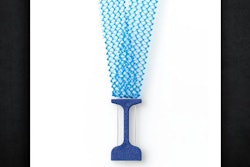The more you know: Pharmaceutical manufacturers can register with Customs and Border Protection (CBP) for a fee of $190 (good for 10 years!) to help the agency in seizing their counterfeit medical products during importation. This registration gives CBP access to the trademark and copyright for drugs, meaning that it’s easier for them to seize items (fewer hoops to jump through) when they are suspected of being fakes.
HDA’s Pharmaceutical Cargo Security Coalition (PCSC) recently held its 2018 Educational Seminar in New Jersey in May. At the event, Tony Orosz, Assistant Director of the Pharmaceutical, Health and Chemical Center of Excellence and Expertise, U.S. Department of Homeland Security, explained that CBP can also alert the manufacturer when counterfeits are spotted. In some cases, manufacturers have been able to visit the center to help identify whether goods are counterfeit.
It’s a worthwhile investment—amounting to under $20 per year—for intel on whether people are counterfeiting or diverting a manufacturer’s goods and where those items are headed.
Orosz was clear in his message that CBP is open to connecting with the healthcare industry to learn about their products and packaging; they maintain the aforementioned “Center of Excellence and Expertise” (CEE) dedicated to the pharmaceutical industry for questions surrounding imports and exports.
Customer and Border Protection runs ten CEEs around the U.S., each specializing in a different industry such as electronics, agriculture, consumer products and machinery. These centers are part of the CBP’s focus on “Trade in the 21st Century,” aligning with modern business practices, zeroing in on industry-specific issues and tailoring their support.
Each CEE is located in an area somewhat central to the industry they concentrate on. The CEE for pharmaceuticals, health and chemicals is located in New York, serving the northeast corridor, home to many healthcare manufacturers.
Seizing counterfeits
“Enforcement is becoming our biggest focus by far,” said Orosz. There are significant amounts of counterfeit drugs entering ports each day, trying to pass for Viagra, painkillers and many more. Some counterfeits labeled as popular drugs have been found to contain rat poison, sawdust and lead-based paint.
“We need to be trained on what your drugs and patents are. Purdue put together a comprehensive product guide that included descriptions of the pills and packaging,” he said. Other pharma brands have provided training to CBP personnel. The product education is helpful “so we can see what is legit and what isn’t. When you register your trademark and copyright with us for ten years, we can look it up in our database, and it gives us permission to seize the goods when they don’t match up.”
And how does serialization factor in? Orosz noted that unique identifiers on drugs help CBP in their efforts to fight counterfeits. When a package is suspect, the agency can reach out to the pharmaceutical manufacturer with the lot numbers to determine if they are legitimate. Additionally, if the number corresponds with a batch that’s meant for another region, such as Europe, but it shows up in New York, that can be a red flag to the manufacturer that product is being diverted from its intended market.
Next steps
Orosz said that manufacturers interested in registering should contact the CEE for Pharmaceuticals, Health and Chemicals. Visit their directory here or view the Intellectual Property Rights e-Recordation (IPRR) application.
The downloadable Intellectual Property Rights (IPR) Product ID Training Guide includes:
- Step-by-step instructions on how to record a trademark or copyright with CBP
- A list of information to include in a product ID guide
- Information about setting up in-person product training sessions
Industry veteran and Senior Director of PCSC, Chuck Forsaith, reinforced the value of this step in brand protection and fighting counterfeits, indicating that a manufacturer would be seriously remiss if they did not give significant consideration to registering their products with CBP.






















